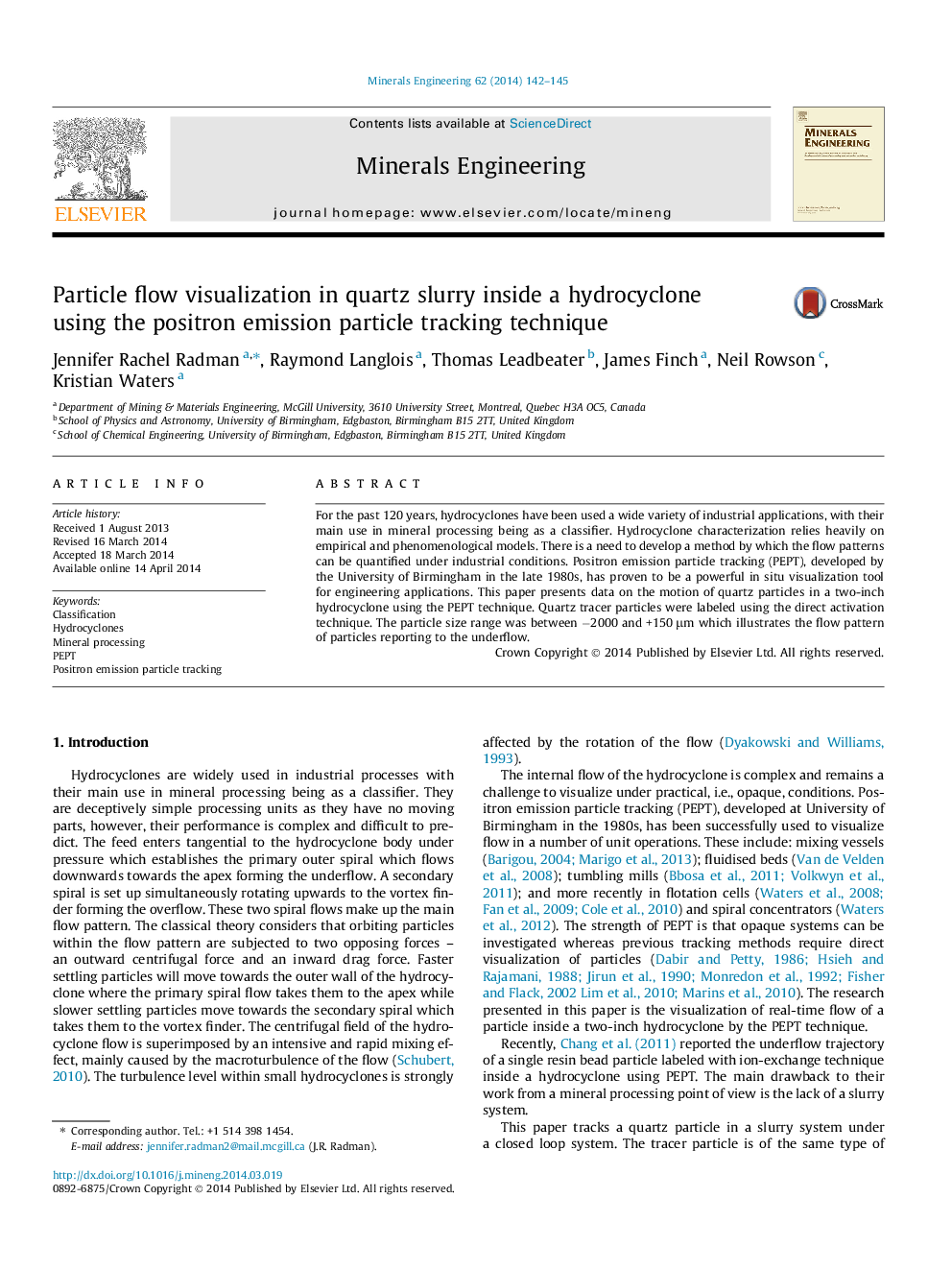| Article ID | Journal | Published Year | Pages | File Type |
|---|---|---|---|---|
| 233220 | Minerals Engineering | 2014 | 4 Pages |
•We track silica particles with PEPT in hydrocyclones.•We examine the change in hydrocyclone flow patterns in different sections.•The silica particle trajectories are turbulent.•Vortex precession and breakdown are both visualized.
For the past 120 years, hydrocyclones have been used a wide variety of industrial applications, with their main use in mineral processing being as a classifier. Hydrocyclone characterization relies heavily on empirical and phenomenological models. There is a need to develop a method by which the flow patterns can be quantified under industrial conditions. Positron emission particle tracking (PEPT), developed by the University of Birmingham in the late 1980s, has proven to be a powerful in situ visualization tool for engineering applications. This paper presents data on the motion of quartz particles in a two-inch hydrocyclone using the PEPT technique. Quartz tracer particles were labeled using the direct activation technique. The particle size range was between −2000 and +150 μm which illustrates the flow pattern of particles reporting to the underflow.
